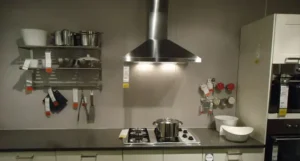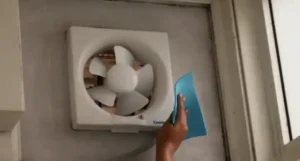Vents serve a critical role in maintaining a safe and comfortable indoor environment by facilitating airflow and regulating temperature. However, there may be occasions when you contemplate covering a vent in your home.
Covering a vent can potentially cause a fire hazard if it restricts proper airflow and leads to overheating of appliances, wiring, or flammable materials.
This article will explore the intricate world of vents, understand their essential functions, and discuss the potential fire hazards that can arise when they are obstructed. We will investigate what precisely can cause a fire when vents are covered, explore effective strategies for minimizing these risks, and determine whether covering vents can genuinely lead to energy savings.

How do Vents Work and What are Their Purposes?
Vents are integral components of residential buildings, and they serve a range of vital purposes, including:
1. Air Circulation
Vents promote the circulation of fresh air throughout a building, preventing indoor air from becoming stagnant and improving overall air quality.
2. Temperature Control
Vents assist in regulating indoor temperatures by allowing for the exchange of heat with the exterior environment. They help maintain a comfortable living environment year-round.
3. Moisture Regulation
Vents play a crucial role in managing humidity levels within a building. They help expel excess moisture, reducing the risk of mold and mildew growth, which can impact both the structure and the health of its occupants.
Types of Vents Used in Residential Homes
Residential homes employ a variety of vent types, each tailored to specific purposes:
1. HVAC Vents
These vents are an integral part of heating, ventilation, and air conditioning systems. They distribute conditioned air throughout the home, ensuring comfortable temperatures and air quality.
2. Kitchen Vents (Range Hoods)
Kitchen vents, commonly known as range hoods, effectively remove cooking fumes, steam, and odors from the kitchen. They play a critical role in maintaining a clean and odor-free cooking environment.
3. Bathroom Vents (Exhaust Fans)
Bathroom vents, often in the form of exhaust fans, are designed to eliminate excess moisture and odors from bathrooms. This enhances indoor air quality and prevents mold and mildew growth.
4. Attic and Roof Vents
Attic and roof vents are installed to regulate temperatures in the attic space. They help prevent heat buildup and control moisture levels, which can extend the life of the roof and improve energy efficiency.
Is Covering a Vent a Fire Hazard?
While it is possible to cover vents for various reasons, this action can indeed pose a fire hazard for several crucial reasons:
1. Grease Accumulation
Kitchen vents, in particular, are prone to accumulating grease and oil particles. These substances are highly flammable, and when exposed to heat or flames, they can ignite, potentially causing a fire.
2. Reduced Ventilation
The obstruction of vents restricts the natural flow of air. This can result in increased heat and humidity in enclosed spaces, raising the risk of appliances and systems overheating, which could lead to a fire hazard.
3. Ignition Risk
Covered vents can create an environment where ignition sources, such as sparks or open flames, have the potential to ignite accumulated debris or flammable materials in the vicinity.
What Can Cause Fire if You Cover Your Vent?
Covering vents can introduce several factors that contribute to fire hazards:
1. Accumulated Debris
Over time, dust, lint, and other flammable particles can accumulate within a covered vent. These materials can become potential ignition sources if exposed to heat or flames.
2. Heat Buildup
The restriction of airflow caused by covered vents can lead to the overheating of appliances or heating systems. This overheating significantly increases the risk of fire.
3. Flammable Materials
In some instances, vents may be covered with combustible materials such as curtains, paper, or cloth. These materials can easily catch fire if they come into contact with heat sources.
How Can You Reduce Fire Risk in Case You Need to Cover a Vent?
In scenarios where covering a vent becomes necessary, several safety precautions can help minimize the associated fire risks:
1. Use Fire-Resistant Materials
When creating vent covers, ensure you choose materials that are non-flammable and heat-resistant. Avoid materials that can easily melt, ignite, or catch fire.
2. Regular Cleaning
Commit to a routine cleaning schedule for both the vent itself and its immediate surroundings. This prevents the accumulation of flammable debris within the vent system.
3. Monitor Appliances
When using covered vents, pay close attention to the functioning of appliances and heating systems. Ensure they do not overheat, and keep them clear of potential ignition sources.
Does Covering Vent Reduce Energy Usage?
Covering vents with the intent of saving energy is generally not recommended. In fact, it can lead to a range of inefficiencies and potential malfunctions in heating and cooling systems. Instead, consider the following alternatives to reduce energy usage:
1. Weatherstripping Doors and Windows
Properly sealing gaps and leaks in doors and windows is an effective way to prevent the escape of conditioned air and maintain energy efficiency.
2. Upgrading Insulation
Enhancing insulation in walls, ceilings, and attics can significantly reduce the need for heating and cooling, resulting in energy savings without compromising safety.
Frequently Asked Questions
Q1: Can I use plastic wrap as a temporary cover for vents?
Using plastic wrap as a temporary vent cover is not advisable. Plastic wrap can melt or catch fire when exposed to heat, making it a hazardous choice.
Q2: Can covering bathroom vents lead to mold growth?
Covering bathroom vents can trap moisture, potentially leading to mold and mildew growth. Proper ventilation is essential in bathrooms to mitigate this risk.
Q3: Are there safety regulations regarding vent covers?
Safety regulations regarding vent covers may vary by location. However, it is generally not recommended to cover vents for extended periods. Compliance with local building and safety codes is essential if you choose to cover vents temporarily.
End Notes
In summary, vents are essential components of residential buildings that contribute to air quality, temperature control, and safety. While there may be situations that necessitate covering a vent, it is crucial to be aware of the potential fire hazards associated with this action. Grease accumulation, restricted ventilation, and the presence of ignition sources are all factors that must be considered.
If you find it necessary to cover a vent, prioritize safety by choosing non-flammable materials, maintaining cleanliness, and carefully monitoring appliances. It is also advisable to explore alternative methods for energy savings, as covering vents can lead to inefficiencies and potential malfunctions in heating and cooling systems. Finally, remember that proper ventilation and maintenance of vents are essential for the safety and well-being of your home.

![Read more about the article [4 Fixes] Why Won’t My Range Hood Fan Turn Off?](https://kitchenhoodcare.com/wp-content/uploads/2023/05/Why-Wont-My-Range-Hood-Fan-Turn-Off-300x161.webp)

